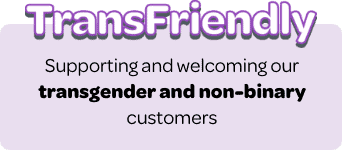
With the holiday season upon us, IntraSpectrum Counseling wishes to acknowledge the additional impact that this time of year can have on our mental health, especially for those in the LGBTQ+ community. The blog post below offers insight for those who may be struggling, and for their allies.
__________________________________________________________________
What is Seasonal Affective Disorder (SAD)?
December is Seasonal Affective Disorder (SAD) Awareness Month, and the perfect time to highlight seasonal depression. SAD is distinguished from other types of depression because depressive episodes follow a seasonal pattern. People often notice the symptoms of SAD beginning in Fall or Winter and ending near Spring. Other people may experience depressive episodes during different times of the year, like through Summer.
What are the Symptoms?
Individuals who experience SAD may be:
- Feeling sad, hopeless, or empty
- Losing energy
- Sleeping too much or too little
- Losing or gaining weight
- Losing interest in enjoyable activities
What are Some Risk Factors?
Geographic location and age can play a role in who may be affected by SAD. Younger individuals, for example, are at a greater risk of experiencing depression during winter. People with SAD who identify as LGBTQ+ may experience additional challenges during holiday seasons when grieving the loss of a family structure or when spending time with family is difficult or harmful.
What Can I Do to Feel Better?
Those who suspect they may have SAD are advised to seek the support of mental health professionals for proper diagnosis and treatment. However, remembering the acronym “ACCEPTS” can help you shift focus away from negative thoughts and feelings.
ACCEPTS
- Activities – Participate in activities that need focus and concentration. This could be hobbies, projects for work or school, chores, or fun activities.
- Contributing – Contribute to something or someone that is outside of yourself. This could be volunteering, helping a loved one, or performing an act of service.
- Comparisons – Consider your situation in comparison to far worse circumstances. This could be a time when you experienced even more pain or a situation where others have not coped as well as you have.
- Emotions – Engage in activities that will bring about the opposite emotion. This could be watching a comedy or listening to silly music when sad. If you are feeling tired, try taking part in high intensity exercise.
- Pushing Away – Push negative thoughts out of your mind. You can create some distance from distressing thoughts by creating an imaginary wall. You can also do this by imagining the issue changing. For example, you can imagine a big problem becoming smaller and smaller or write your problems on a piece of paper and throw them away.
- Thoughts – Focus on your thoughts when your emotions become too intense. Try counting to 10, counting items in your environment, reading a book, thinking about song lyrics, or completing a puzzle.
- Sensations – Rely on non-harmful physical sensations to distract you from negative emotions. You can take a warm bath/shower, hold an ice cube in your hand, smell a comforting fragrance, or taste something sour.
__________________________________________________________________
The blog above was authored by Trent Owens. IntraSpectrum Counseling is Chicago’s leading psychotherapy practice dedicated to the LGBTQ+ community, and we strive to provide the highest quality mental health care for multicultural, kink, polyamorous, and intersectional issues. For anyone needing affirming and validating support in their healing, please click here or email us at help@intraspectrum-chicago.com.





 Today, July 26th, is National Disability Independence Day. This annual commemoration marks the day in 1990 when the Americans with Disabilities Act (ADA) was signed into law. The ADA enshrined several crucial civil rights protections for individuals with disabilities, but it still falls short of its intended goals after over 30 years on the books.
Today, July 26th, is National Disability Independence Day. This annual commemoration marks the day in 1990 when the Americans with Disabilities Act (ADA) was signed into law. The ADA enshrined several crucial civil rights protections for individuals with disabilities, but it still falls short of its intended goals after over 30 years on the books.